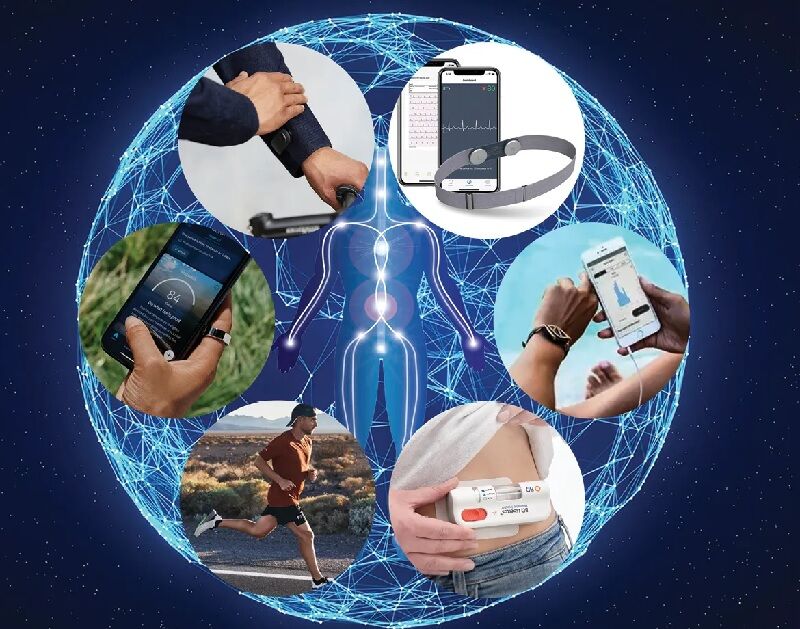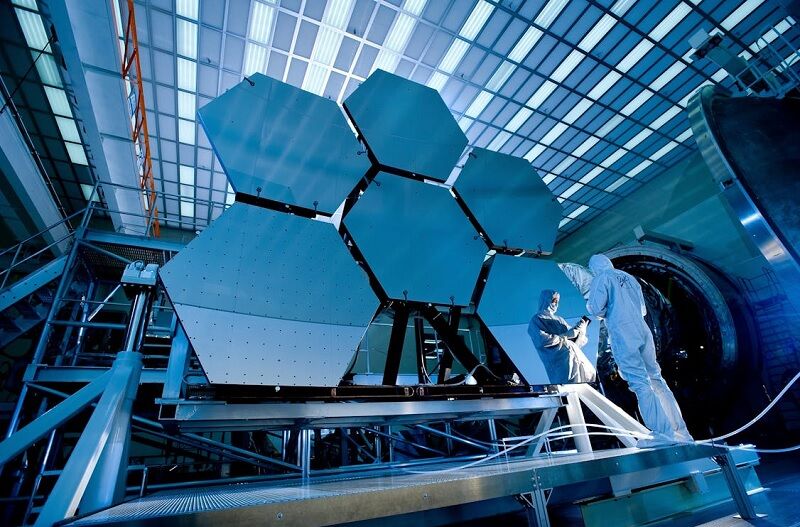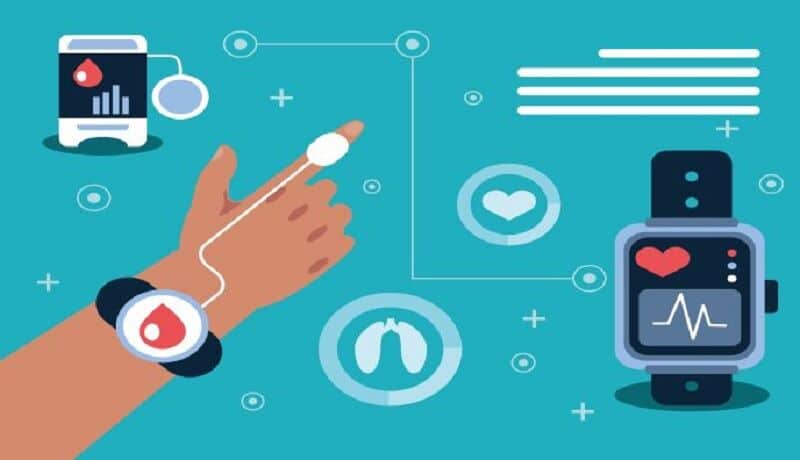Wearable technology innovations and applications

Venture into the evolving realm of wearable technology, where innovation is not merely a trendy term, but a crucial element of survival. This advanced sector is instigating transformations across industries, improving worker safety, elevating performance levels, and diligently focusing on health. From sophisticated smartwatches to comprehensive activity trackers, wearable technology is not an aspect of a futuristic vision, it is firmly situated in our contemporary reality, inducing revolutionary changes in our lifestyles and professional lives.
The ecosystem of wearable technology is expansive and diverse, presenting devices that are designed to serve multiple functionalities. Whether you are interested in seeing how this equipment can augment your personal life or a commercial entity endeavouring to optimise operations, there is indeed a wearable device that can cater to your needs.
In this article, we will dissect the three central areas in which wearable technology is exceptionally effective: safety, performance, and healthcare. Furthermore, we will also analyse the elite innovations that are prepared to reshape the market in the forthcoming years. Therefore, fasten your seatbelts and prepare for an exhilarating exploration into the nucleus of wearable technology.
Evolution of wearable technology

Pixabay from pexels.com
Kicking off with computer shoes
Starting in the swinging ‘60s, wearable technology took a leap forward as a funky four-button computer came on the scene. Who’s to thank for that? Two awesome dudes, Edward Thorp and Claude Shannon, created a groovy gadget that could be snugly tucked into a shoe or tied around the waist. Jump into the 1970s and 1980s, and wearable technology was picking up even more steam with the launch of wristwatches and rad devices like the Walkman that totally shifted the way we listen to tunes.
Fast forward to today, and the wearables market is bursting with choices. You could say it’s not just showing how fast tech is evolving, but also how our own tastes and demands are changing. It’s not just about smartwatches and fitness trackers anymore. Now, you’ve got smart clothing rolling out from places like Hexoskin and AiQ Clothing.
These hip threads are the real deal when it comes to wearable tech, bursting with cool features like recording body vitals – talk about a game-changer for invisible wearables! Imagine sportin’ a tech gadget as part of your outfit, not just as an add-on. It’s as if technology’s become part of what you’re wearing. That, my friends, is the new reality in the world of wearable tech.
The implications on routine functioning and effectiveness
The field of wearable technology has undergone a significant metamorphosis, transitioning from merely being an eccentric piece of machinery to a vital everyday accessory. These gadgets are not idle bystanders observing your routine activities, instead, they foster interaction, assimilate, and adapt to your lifestyle. They render a considerable influence on day-to-day life, ameliorating attributes such as productivity, fitness, and fundamental convenience.
From tracking your cardiac rhythm during physical exercises to alerting you about a critical electronic mail, wearable technology aids in establishing equilibrium amongst work, fitness, and personal spheres. Surpassing its individual utility, it has made a groundbreaking impact in the healthcare sector by supplying wearable devices that facilitate continuous patient monitoring, thus safeguarding against any detriment to their health.
Key innovations in wearable technology
As technology takes giant leaps forward, innovations surface that redefine our interaction with the digital world. Among these, wearable technology has become a transformative force, earning a spotlight in consumer electronics. Let’s explore the critical innovations in this realm that are shaping our future.
Health assessment instruments
Reframing our understanding of health and wellness, health assessment instruments have demonstrated their profound usefulness. Think of a device that not only accounts for your activity levels but also scrutinizes your heart functionality, sleep adequacy, and stress indicators. The Oura Ring Generation 3, for instance, is a notable innovation that undertakes these tasks and beyond. Its clinical-grade sensors examine daily activity, sleep adequacy, and body temperature, among others, providing cogent feedback on your comprehensive health status in real time.
Advanced timepieces and fitness monitors
Reflect on advanced timepieces and fitness monitors, the critical devices in wearable technology’s realm. Originally constructed merely for timekeeping, advanced timepieces have transformed over time to include capabilities such as receiving text message alerts, accessing meteorological updates, and recording exercise routines. The Modjoul SmartBelt serves as an exemplary wearable device devised to monitor employee safety and working hours. By recording pivotal data such as location, velocity, temperature, humidity, and kinetic activity, this belt provides instantaneous haptic feedback, ensuring a secure work environment.
Advanced features in consumer wearables
As we delve deeper into the universe of wearable technology, the emergence of smart garments stands as a testament to the advanced features now offered by consumer wearables. Envision a smart belt that not only serves a practical purpose but also guides the visually impaired safely through their surroundings. AI Guided’s Smart Belt is a revolutionary example that uses advanced AI technology to scan and navigate obstacle-free paths for users. Notably, this intuitive wearable has been recognised as a 2024 Honoree for the CES Innovation Award, demonstrating how innovative features are steadily becoming an integral part of wearable technology.
The innovations, applications, and capabilities are evolving rapidly, revolutionising wearable technology as we know it. As advancements continue to unfold, expect these devices to become increasingly embedded in our lives, transforming not just the way we interact with technology, but also how we view our wellbeing.
Wearable technology in healthcare

Through technological advancements, healthcare has become a primary sector to reap the benefits of wearable technology. Let’s delve deeper into how wearables enhance patient care and the peculiarities of advancements in remote monitoring.
Advancements in patient care
In an unprecedented manner, wearable technologies, such as fitness trackers and smartwatches, present progressive enhancements to patient care. These devices extend beyond mere fitness tracking, flourishing as mechanisms for the continuous monitoring of crucial vital signs. This transmission of data is of utmost importance in the management of illnesses and in the prevention of potential health emergencies. This could conceivably prove instrumental in the early detection of conditions such as tachycardia or bradycardia. Therefore, advancements in wearable technology transcend beyond mere aesthetics or convenience, manifesting significant implications within the medical field.
Advancements in remote monitoring
The progression of wearable technology is profoundly transforming the sector of remote health monitoring. No longer is the continuous observation of patients restricted to institutional environments like hospitals or clinics. Wearables, due to their superior sensor technology and capacity for data analysis, have effectively converted residences into viable healthcare environments. For example, wearable glucose monitoring devices provide real-time tracking of blood sugar levels, thereby enabling patients living with diabetes to manage their medical condition within their home settings. In the same vein, sleep-monitoring wearable devices can aid in detecting conditions such as sleep apnea, eliminating the requirement for hospital-based sleep studies. These instances represent the groundbreaking innovations and applications of wearable technology in the advancement of remote patient monitoring, suggesting a future for healthcare that is both accessible and efficient.
The future of wearable technology

As we traverse on this journey through wearable technology, let’s gaze into the future and contemplate its progression, driven by budding innovations and diverse applications.
Emerging trends and predictions
In the realm of wearable hardware, you’ll notice an escalation in its integral role in our daily lives. The healthcare sector stands to gain significantly, with augmented tracking of vital signs and remote health maintenance among the prime benefits. Every aspect – whether it’s telemedicine applications, remote health monitoring, or AI-based diagnosis – arms the wearer with the power to self-regulate, transforming homes into potential healthcare stations.
Looking to the realm of sports, wearable technology provides a new playground for performance tracking. Pulsometer watches, GPS-fused vests for football players, and wearable heart monitors for cyclists exemplify this trend.
Integration with IoT and AI
Integration of wearables with AI and IoT is a glorious prospect that promises to amplify the impact of these individual technologies. The future of wearable technology thrives on the seamless interplay of these systems. Through IoT, your wearables can connect with other devices or servers on the network, streaming real-time data to the cloud for instantaneous processing and analysis. Insights derived from your wearable can be used to activate or modulate other connected devices, enhancing your interaction with the digital world.
AI, on the other hand, brings a colossal shift in the way your wearable devices function. AI algorithms empower your wearables to learn from patterns and predict outcomes, making them more intuitive and personalised. Notably, AI has bestowed wearables with intelligent speech recognition capabilities, effectively enabling hands-free operation and opening new frontiers for user-interface design in wearables.
Embarking upon the intriguing domain of wearable technology, it is compelling to observe its evolution from niche curiosities to fundamental components of our daily lives. Innovative creations such as Oura Ring Generation 3 and smart garments are dramatically reshaping the landscape, as wearables initiate a transformation of both healthcare and athletic performance monitoring.
Want to no more, Advancements in renewable energy technology. Renewable energy isn’t just a trending buzzword – it’s an essential piece of the puzzle as we strive for a greener tomorrow. Exciting developments in this field are not only shaking up how we think about power but also paving the way for a friendlier relationship with our planet.
































